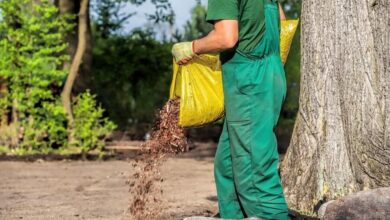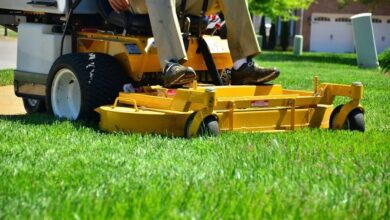Why Your Crocosmia Is Not Flowering: Learn Expert Tips

Are you frustrated with your crocosmia not flowering as it should? Don’t worry, we’ve got you covered!
In this article, we will explore five common reasons why your crocosmia isn’t blooming and provide you with practical solutions to fix it.
Whether it’s planting in the wrong location, insufficient sunlight, improper watering, lack of nutrients, or pesky pests and diseases, we’ll help you identify the problem and get your crocosmia back on track.
So let’s dive in and bring those vibrant blooms back to your garden!
Planting in the Wrong Location
If you’ve planted your crocosmia in the wrong location, it won’t be able to receive the proper sunlight and nutrients it needs to flower. Make sure to choose a spot that gets at least six hours of direct sunlight per day.
Additionally, avoid planting it in areas with poor drainage or excessive shade. Insufficient sunlight can also prevent your crocosmia from blooming, so let’s now explore how to address this issue.
Insufficient Sunlight
Lack of sunlight could be the cause of your crocosmia not blooming, so try moving it to a sunnier spot. Crocosmia plants need at least six hours of direct sunlight daily to thrive and produce vibrant flowers. Insufficient sunlight can result in weak, spindly growth and a lack of blooms.
Once you’ve relocated your crocosmia to a sunnier area, you can move on to addressing another potential issue: improper watering.
Improper Watering
Improper watering may lead to root rot and hinder the blooming of your crocosmia plant, so make sure to water it sparingly and allow the soil to dry out between waterings. Overwatering can suffocate the roots and prevent the plant from absorbing necessary nutrients. To help you better understand the watering needs of your crocosmia, take a look at the table below:
| Watering Frequency | Signs of Overwatering |
|---|---|
| Too often | Yellowing leaves |
| Too little | Wilting blooms |
Now that you know how to properly water your crocosmia, let’s address the issue of lack of nutrients.
Lack of Nutrients
To ensure proper growth and blooming, it’s important to provide your crocosmia plant with the necessary nutrients. Make sure you fertilize your plant regularly during the growing season. Use a balanced fertilizer with equal amounts of nitrogen, phosphorus, and potassium. This will supply your crocosmia with the essential elements it needs to produce vibrant flowers.
However, even with the right nutrients, pests and diseases can still affect your plant’s flowering potential.
Pests and Diseases
Even with the right nutrients, pests and diseases can still impact your crocosmia plant’s ability to produce vibrant flowers. Don’t let pesky invaders ruin your garden oasis! Here’s what you need to know:
- Aphids love to feast on crocosmia leaves, sucking the life out of them. Keep an eye out for these tiny pests and take action immediately.
- Fungal diseases like leaf spot and rust can cause unsightly blemishes on your plant. Regularly inspect and treat accordingly.
- Viral infections can weaken your crocosmia, leading to poor flowering. Prevent the spread of viruses by practicing good hygiene in your garden.
Now, let’s dive into the next section about overcrowding and competition for resources.
Overcrowding and Competition
When crocosmia plants are crowded together, competition for resources like sunlight and water can hinder their growth and flowering.
To fix this, thin out the overcrowded plants by removing some of them. This will allow the remaining plants to have more access to essential resources, resulting in better growth and increased flowering.
Pruning and maintenance are essential for the overall health of your crocosmia plants, ensuring optimal blooming and a vibrant garden.
Pruning and Maintenance
Now that you understand how overcrowding and competition can affect the flowering of your crocosmia, let’s talk about another important factor: pruning and maintenance. By properly pruning your crocosmia, you can encourage healthy growth and abundant blooms. Regular maintenance tasks such as removing dead foliage and dividing overcrowded clumps also play a crucial role in ensuring your crocosmia’s flowering success. Let’s take a look at some helpful pruning and maintenance tips below:
| Pruning Tips | Maintenance Tips |
|---|---|
| Trim back the foliage in late winter or early spring. | Remove dead foliage regularly to prevent diseases and pests. |
| Cut back spent flower stalks to encourage new blooms. | Divide overcrowded clumps every three to four years. |
| Remove any damaged or diseased leaves to maintain plant health. | Mulch around the base of the plants to retain moisture and suppress weeds. |
| Prune away any crossing or rubbing stems to improve air circulation. | Provide adequate water during dry spells to prevent stress. |
Conclusion
So, if your crocosmia isn’t flowering, there could be a few reasons behind it.
Make sure you have planted it in the right location with enough sunlight. Proper watering and providing the necessary nutrients are also important for its growth.
Keep an eye out for pests and diseases that might be affecting it. Additionally, overcrowding and competition can hinder its blooming.
Lastly, regular pruning and maintenance will help keep your crocosmia healthy and encourage flowering.
Take these steps, and soon you’ll have a beautiful blooming crocosmia in your garden!
Frequently Asked Questions
Can I Plant Crocosmia In A Container Instead Of In The Ground?
Yes, you can definitely plant crocosmia in a container instead of in the ground. It allows for better control over soil conditions and is a great option for small spaces or if you want to move the plant around.
How Often Should I Water My Crocosmia Plants?
Water your crocosmia plants deeply once a week, ensuring the soil is evenly moist. However, adjust the frequency based on weather conditions and the moisture levels of the soil. Avoid overwatering, as it can lead to root rot.
Can I Use A General-purpose Fertilizer For My Crocosmia Plants?
Yes, you can use a general-purpose fertilizer for your crocosmia plants. It will provide the necessary nutrients to promote healthy growth and flowering. Make sure to follow the instructions on the fertilizer packaging for optimal results.
Are There Any Specific Pests That Commonly Affect Crocosmia Plants?
Yes, there are specific pests that commonly affect crocosmia plants. Some of the common pests include aphids, spider mites, and thrips. Proper pest control measures can help protect your crocosmia plants from these pests.
How Often Should I Divide And Replant My Crocosmia Bulbs?
You should divide and replant your crocosmia bulbs every 3-5 years. This helps prevent overcrowding and promotes better flowering. Remember to do this in early spring or after the blooming season has ended.




